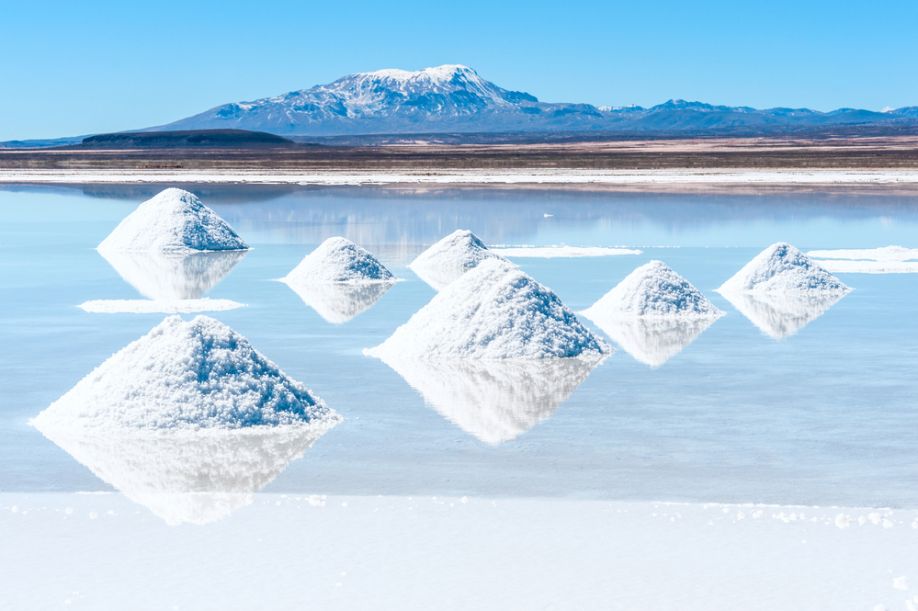How We Can Protect Raw Materials for an Energy Transition

Transitioning to a world with net-zero emissions is a tall task. Protecting raw materials is one of the greatest challenges of such a massive energy transition. How can we secure them for the future while striving for carbon neutrality and meeting the demand for new clean energy technologies? Here are some ideas.
Protecting the Right Materials
The mining industry won’t get through the energy transition unscathed, so industry professionals must determine which raw materials are worth protecting. The carbon-neutral world we’re working toward will largely rely on batteries and networks of electricity, so a handful of minerals are expected to remain in high demand.
Analysts project that copper, nickel and lithium will make up 80% of the mining industry’s market value by 2050. Some even predict that cobalt, graphite and lithium production could increase by 500% in the next 30 years to meet the demand for solar, wind and geothermal power sources.
However, these predictions don’t mean that other valuable commodities like manganese will phase out completely. As the markets for energy-efficient technologies grow, opportunities will arise to reduce our reliance on a handful of raw materials.
In the meantime, you can expect the supply and demand gap between certain minerals to grow — especially in the United States and other resource-rich countries. Extracting raw materials in the U.S. tends to come with some baggage, as local communities, indigenous tribes and environmental groups often clash with mining companies.
Similar conflicts have occurred in Chile, Peru, Indonesia and other big players in the mineral mining industry. Growing tension between citizens and mining companies is a major roadblock to a successful energy transition. The minerals themselves aren’t the problem — it’s the destructive effects on the environment and the people who live there.
The only clear solution to please both sides is a higher mining standard. A resource-rich area should be able to take full advantage of its offerings, but industry leaders have to find a way to extract them responsibly.
Sustainable, Responsible Mining
One method that could revolutionize the mining industry during the net-zero transition is the World Bank’s climate-smart mining initiative. It works in partnership with the UN’s Sustainable Development Goals, aiming to help developing countries benefit from the demand for their resources while ensuring responsible, eco-friendly extraction.
There are four pillars of the climate-smart initiative and their roles:
- Climate mitigation: integrating renewable energy sources and innovative extraction practices into the mining sector
- Climate adaptation: landscape management, resource efficiency and waste solutions
- Reducing material impacts: supply chain management and adapting a circular economy for low-carbon minerals
- Creating marketing opportunities: geological data management, de-risking investments for low-carbon minerals and using carbon finance instruments
Other powerful organizations have also announced ambitious goals that will aid in the research and development of sustainable mining. For example, the Department of Energy (DOE) wants to eliminate nickel and cobalt from lithium-ion batteries by 2030. We likely won’t be able to make such a massive change in eight years, but it establishes the necessary urgency to spark a change.
A shift toward domestic manufacturers instead of national or international corporations could also make mineral mining more energy-efficient. The U.S.’s new tax credit structure certainly benefits local enterprises over the bigger names.
The mining industry has room to improve supply and demand. Relying on domestic resources and raising the industry’s standards will help the collection of precious raw materials. Implementing new tools and methods that remove the most destructive items from the supply chain will increase demand for the remaining eco-friendly resources.
Progress Will Take Time
Patience will be the ultimate virtue, regardless of which minerals the mining industry prioritizes and what new technologies and strategies we develop. Progress will take time. The transition to net-zero emissions won’t be a leap but a slow, deliberate crawl. This sector has a lot of work to do, both on a local and global level.
Comments (0)
This post does not have any comments. Be the first to leave a comment below.
Featured Product

